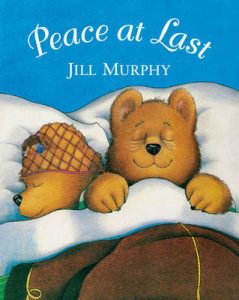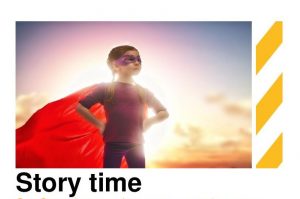Behind the scenes of Storytime
Library staff are passionate about books and we love sharing great stories with children. One of the ways we do this is by holding free Storytime sessions for small children in each library in the Borough once a week. Storytime is aimed at children under 6, and their carers. A library Storytime will last for about 20-30 minutes. It is a happy time during which children can become enthralled and excited by the story and go home talking about the book and all the characters.
Reading a story aloud to a group of excited children of different ages, interests and comprehension levels involves some preparation. Although many children love reading a book one-to-one with an adult, the same book they love may not hold the attention of a group of children or be suitable for reading aloud to a group. Learning how to run a story time may include attending a training session or watching an experienced member of staff read stories to groups and listening to what goes down well with the children.
Things to consider when preparing a story time include:

Choice of book
The age of the children will influence the choice of story time books and these must always have images large enough for the audience to see. They may have flaps to open, or have a large format, or there may be a storysack with books with props. Stories may include rhymes that children can predict or repeated phrases which invite participation from children – for example ‘Swishy swashy, swishy swashy, swishy swashy’ in We’re going on a bear hunt by Michael Rosen. Sometimes our story times are based on a theme such as seasons, holidays or special events and our chosen books reflect that theme.
Use of the voice
When stories are read aloud they can be enlivened by using the voice in different ways, for example:
• Altering the pitch by speaking in high or low voices – squeaking like a mouse or deep and growling like a bear
• Changing pace – speaking quickly for an exciting part of the story, or slowly to build up excitement or to represent a heavy animal like an elephant.
• Volume – speaking loudly, or dropping your voice to a whisper which can have the magical effect of every child listening intently with all eyes on you!
• Making use of silence – a pause before turning a page, causing anticipation or the use of a long gasp when the story becomes exciting
• Using different accents to represent different characters in the story
• Portraying emotions by sounding happy, sad, confused or excited.
Practice, practice, practice…

It is important to practice reading the story aloud as it helps the reader to become sufficiently familiar with the book to be able to lift their eyes off the page and tell the story from memory, which in turn allows more interaction with the children and a chance to watch their reaction as the story develops.
Joining in
Some books with rhyme, rhythm and repetition which provide an ideal opportunity to join in. Here are some books that do exactly that; Spot goes to the farm flap book by Eric Hill, Peace at Last by Jill Murphy, We’re going on a bear hunt by Michael Rosen illustrated by Helen Oxenbury or Shark in the Park by Nick Sharratt.
The Delivery
Every member of staff reading a story will have their own way of reading and engaging with the audience of children and adults.  There is no standard way of reading a story which is what makes it so much fun to do! If you have the care of small children, bring them along to a story time one week and join in the fun!
There is no standard way of reading a story which is what makes it so much fun to do! If you have the care of small children, bring them along to a story time one week and join in the fun!
For more information on our regular storytimes visit: www.richmond.gov.uk/storytime
